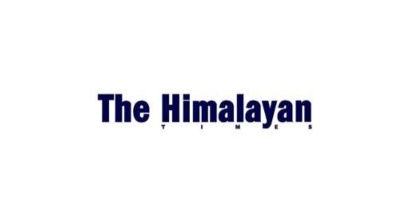Nationalistic education Some Korean lessons for Nepal
Mana Prasad Wagley
The Korean experience tells us that only changing the names in the curricula will not help produce good citizens.
South Korea attempted to educate its people to bring them into the mainstream through nationalistic education for more than half a century. Since previous governments were not democratic, they tried to produce people obedient to authority. As a matter of fact, all dictatorial governments have tried to create an environment causing people to be afraid of power and to be detached politically. The same kind of education can be remembered during Panchayat polity in Nepal, when we heard “education for democracy” which was nothing but a deceitful manipulating instrument.
Nationalistic education in Korea went through different names at different times depending upon the nature of the government in power. Sometimes it was launched as citizenship education and at other times as democratic education, etc. in the 40s and 50s. In the 60s the government made an official regulation to recite the statements of “Revolution Pledges” written to rationalise the military coup. In 1963, they initiated a complete school curriculum reform by introducing a new subject called “Anti-communism and Morality” as a major subject.
Democratisation means to construct a “democratic society”. So, all people should be involved in repressing unregulated “selfishism,” which might occur without control at the vulnerable time in social control, owing to the retreat of authority-oriented ruling. Examples from Latin America and other countries tell us that a temporarily enfeebled social controlling power might weaken democracy and bring about a new dictatorship-type government.
From the time of liberation from the Japanese in 1945 to the time of founding of the independent Korea in 1948, democratic educational ideas prevailed. The subject of “civics” was assigned to all levels of school education. Later, civics, history, and geography were unified as one subject “social studies”. In 1954, it was changed to “moral education”. In 1956 self-discipline was replaced by the term “morality.” This change indicates that education focusing on engendering patriotic people was more stressed than fostering democratic attitude.
The Korean people brought down dictatorship and established democratic government, through the April 19 Revolution in 1960. Political education for the people was carried out by a comprehensive, government-centred movement “National Movement for Reconstruction,” the focus of which was political education. The Central Educational Research Centre developed a democratic citizenship education project in 1962 financially supported by the US Cultural Centre in Korea for six years. They conducted seven seminars for students, teachers, professors and political leaders. The suggested central concepts of democracy, according to this project, were respect of human rights, service and cooperation, fulfilment of responsibility, law-abiding and public morality, and selection of good leaders. Among these, “selection of good leaders” sounded ambiguous. The reason for this might be related to the rationalisation process that the military government devised for the justification of the entrance of military men to government and politics.
In 1968, the president publicly declared the “National Education Charter”. The military government regulated the Education Charter that they were to be contained in all the textbooks and to be recited at all public events. Education that promoted active democratic citizenship was becoming more and more restricted. Government-centred political education was expanding. Similar examples of reciting nationalistic song by all grade students in Nepali schools before 1990 can be remembered in this context.
In the 70s and 80s “New Community Movement” under the government’s forceful direction, intruded into all fields of society. In the schools, a new subject, “national ethics”, emerged as a required subject. Moreover, the government also initiated another government-directed campaign “Society Purification Movement” and launched “national identity education” in order to teach the people the regime’s ideology. The political education forced by the government could bring forth the expected result owing to its perfunctory practices; however, in reality it worsened the ideological conflicts. It is hard to find any proof as to whether the students who received the enforced study actually attained a higher consciousness.
Nepal also has been through these kinds of curricular changes in 1956, 1961, 1971 and 1992 and introduced Panchayat, Nepal Parichaya, social studies, moral education, as efforts towards nationalistic education. These days, again, the Ministry of Education is talking about changing curricula towards nationalistic education. It ranges from civic to military education, so the government should be clear towards the definition of it and come up with clear agendas for curricular reform. One should be careful if the present curricula lack nationalistic contents. A thorough analysis of the existing curricula tells us that there are more than enough contents in social studies for nationalistic education. So the effort of the ministry should be directed towards making those contents applicable rather than changing curricula without justification. The Korean experience tells us that only changing the names in the curricula will not help produce good citizens.
Dr Wagley is professor of Education, TU





